Small and Medium Sized Mammal Inventory of Everglades National Park and Big Cypress National Preserve
Basic species presence and distribution information is essential to effective wildlife management. We must first have a good grasp on what is currently living in our natural areas in order to be able to monitor changes in wildife populations. This information is also important when it comes to understanding the impact of exotic plants and animals on native species.
The goal of our project is to conduct an all encompassing inventory of the small and medium sized mammals that live in both Everglades National Park (ENP) and Big Cypress National Preserve (BCNP).
This project is funded by the National Park Service, specifically, the South Florida/ Carribbean Network Inventory and Monitoring.
Our Study Area
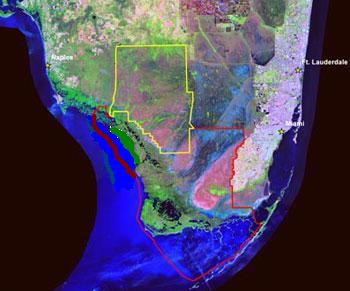
Our study is being conducted in both Big Cypress National Preserve (outlined in yellow above) and Everglades National Park (outlined in red above). Combined, these two areas encompass over 2 million acres of habitat.
Where We Are looking
We divided each park into 5 habitat types in which we survey for mammals.
ENP Habitat Types
Pinelands
Pinelands of the Everglades are dominated by Slash Pine (Pinus elliottii), often with a saw palmetto (Serenoa repens) understory and limestone substrate. Cotton rats (Sigmodon hispidus), cotton mice (Peromyscus gossypinus) and rice rats (Oryzomys palustris) are common inhabitants of these areas.


Hardwood Hammock
Hardwood hammocks contain the greatest mammal species diversity in both parks. In ENP, 16 species have been documented in hammocks, including marsh rabbits (Sylvilagus palustris) and gray squirrels (Sciurus carolinesnis).


Mangrove
Three varieties of mangrove (red, black, and white) can be found in ENP. In these habitats, raccoons (Procyon lotor) and black rats (Rattus rattus) are commonly encountered.
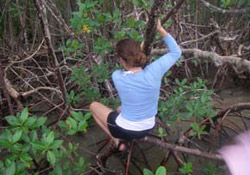
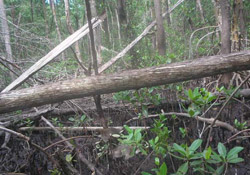
Slough
Slough habitats in ENP are typified by sawgrass (Cladium jamaicense). This seemingly inhospitable environment is often home to muskrats (Neofiber alleni), cotton rats and rice rats.
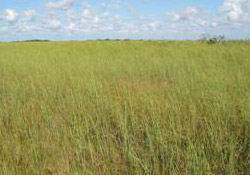
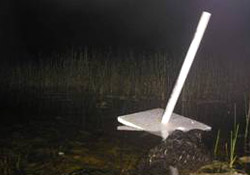
Marl Prairie
Marl prairie, often associated with the "rocky glades", is home to everything from coyotes (Canis latrans) to bobcats (Lynx rufus).


Big Cypress Habitats
Cypress
Bald cypress (Taxodium distichum) and pond cypress (Taxodium ascendens) are the dominant species in cypress areas. Animals such as raccoons, marsh rabbits, and Big Cypress fox squirrels (Sciurus niger avencii) are often found here.
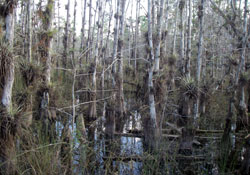
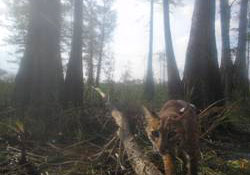
Cypress Prairie
Cypress prairie habitats are comprised of prairie with a scattering of cypress treees, which are often smaller in stature. Rice rats, cotton rats and cotton mice can be found in these areas.
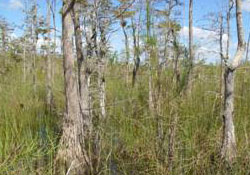

Hardwood Hammock
As in ENP, hammocks in Big Cypress are home to the greatest number of mammal species, with over 22 species documented in this habitat type.


Pines
In the pinelands of Big Cypress, you can see everything from nine-banded armadillos (Dasypus novemcinctus) to black bears (Ursus americanus).
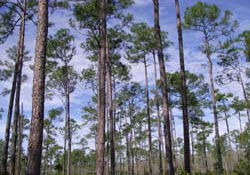
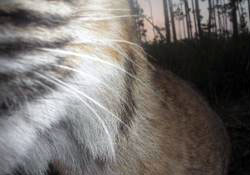
Prairie
Prairie in Big Cypress, comprised of mulhy grass (Muhlenbergia cappillaries), spike rush (Eleocharis spp.) and sawgrass, is home to the muskrat, bobcat, and oppossum.

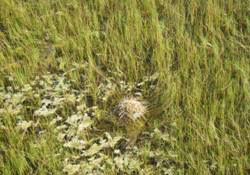
How We Get to Our Sites
We have employed nearly every mode of transportaton available to us to access our sampling locations throughout the two parks. Everything from airboats, helicopters, motorboats, canoes and kayaks, 4x4 vehicles, and good old fashioned hiking!


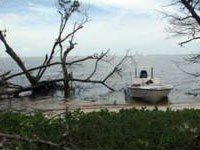

How We Detect the Critters
Digital camera traps
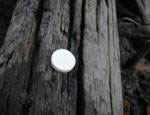 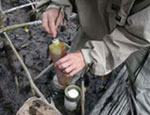
|
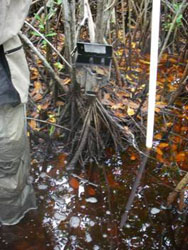 |
Remote sensing TrailMaster® cameras, which are triggered by motion, are placed at each site. Baits used include sardines, cat and dog food, and various scent lures (skunk essence, fish oil, bobcat urine, and canine call). Cameras are positioned so that any small and medium sized mammals coming to investigate the bait will be photographed. Cameras and bait are set out and then retrieved two weeks later.
Live trapping
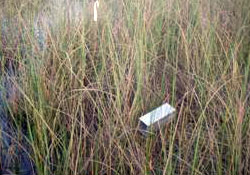
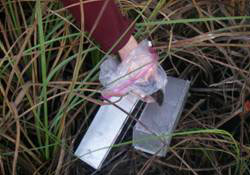
Once each month (in each park) we set Sherman® live traps to sample for small mammals (shrews, mice, rats).
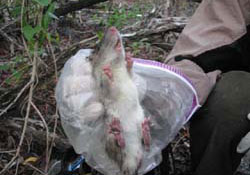
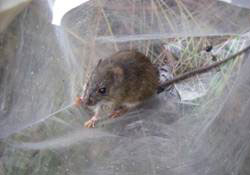
Environmental conditions, such as temperature, time of day, and the presence of standing water are all recorded. Finally, vegetation sampling is conducted at each live trapping and camera site.
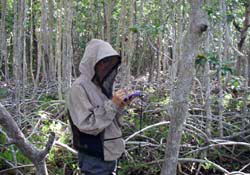
Additional Methods of Detection Include:
Track Plates
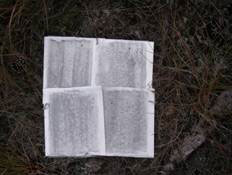

Owl Pellet Dissection

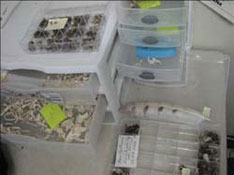
Opportunistic sightings (roadkill, live sightings, prints, scat)
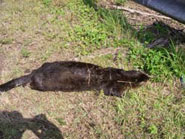
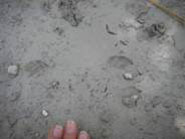
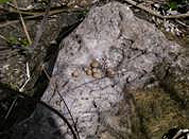
All of our data are then entered into a database back at the office. Using this data, we can predict which habitats within the parks are most likely to have certain mammal species living in them, even if we weren't able to sample them directly.
What We've Found So Far
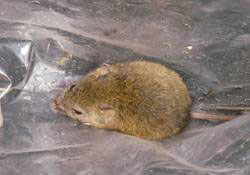

Trapping has documented six small mammal species living in the two parks: Short-tailed shrew (Blarina brevicauda), cotton mouse (Peromyscus gossypinus), house mouse (Mus musculus), rice rat (Oryzomys palustris), cotton rat (Sigmodon hispidus), and black rat (Rattus rattus).

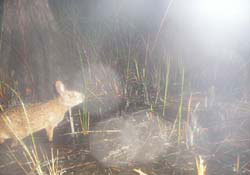
Our cameras have documented the presence of over 20 species such as: coyote (Canis latrans), marsh rabbit (Sylvilagus palustris), raccoon (Procyon lotor), and armadillo (Daasypus novemcinctus) among others including some species we found by trapping.

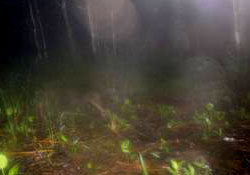
Ongoing Work
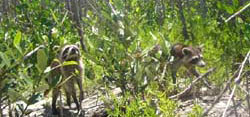
The first year of this two year project involves the widespread inventory of both parks. In the second year we will focus our efforts on trying to detect some of the more rare and elusive mammals, such as the Everglades mink (Mustela vison).
Further Information
If you would like further information on this project please contact Shona Wilson.




